About Opioid Addiction
Learn More About Opioid Addiction
Opioids are a category of substances that include natural derivatives of the opium poppy plant and synthetic versions of these drugs. Opioids interact with receptors in the central nervous system that are associated with feelings of pain, sedation, and euphoria. Common examples of opioids include morphine, heroin, oxycodone, hydrocodone, and codeine. Opioids are powerful and highly addictive substances that are used both for legitimate medical reasons and for recreational purposes.
In medical situations, opioids are most commonly used for their analgesic, or painkilling, properties. For example, the prescription pain medications OxyContin and Vicodin both contain opioids. Morphine is often used in hospitals before and after patients undergo surgery. Another opioid, fentanyl, is provided to cancer patients who are experiencing breakthrough pain that cannot be alleviated by morphine.
Along with heroin, the opioids that are described in the previous paragraphs are also highly sought after by individuals who desire to use them for recreational purposes. While heroin was once the most commonly abused opioid in the United States, the abuse of prescription painkillers has increased dramatically in recent years.
Even when consumed for legitimate medical purposes, individuals who use opioids run the risk of developing tolerance and becoming dependent on them. This risk is even greater when these substances are intentionally misused or abused for recreational purposes. However, with proper professional intervention, individuals who have become addicted to opioids can overcome their problems and achieve long-term recovery.
Statistics
Opioid Addiction Statistics
In the United States, research conducted as part of the annual National Survey on Drug Use and Health (NS-DUH) reveals that about 20 million Americans have abused an opioid at least once in their lives, with about two million people having done so in the past year. NS-DUH data also indicates that about four million Americans have abused heroin at least once in their lives, with about 650,000 people having done so in the past 12 months. About one of every four people who abuse heroin will become addicted to this drug.
Information provided by the National Institute on Drug Abuse (NIDA) indicates that prescriptions for opioid-based medications in the U.S. increased by nearly 300 percent in just over two decades, rising from 76 million prescriptions in 1991 to 207 million prescriptions in 2013. In that same period of time, opioid overdoses more than tripled, increasing from about 5,000 to more than 16,000.
Among adolescents and teenagers in the U.S., the abuse of prescription medications that contain opioids has decreased slightly in recent years, though the problem is far from nonexistent. According to NS-DUH data from 2013, 7.3 percent of high school students, or more than one million teenagers, have abused a prescription painkiller at least once in their lives. The 2013 total continued a three-year downward trend that began in 2011, when 8.6 percent of high school students said they had abused a prescription painkiller. Heroin abuse among students between the ages of 14 and 17 remains low but consistent, holding steady at about 0.2 percent over the last three years.
The World Health Organization (WHO) reports that an estimated 35 million people across the globe abuse opioids every year.
Causes & Risks
Causes and Risk Factors for Opioid Addiction
The likelihood that a person will abuse and become addicted to morphine, prescription pills, heroin, or another opioid may be influenced by several genetic and environmental factors, including the following:
Genetic: Significant research involving families, twins, and adopted children indicates a strong genetic association with substance use disorders. People whose parents and/or siblings have had chemical dependency problems are as much as three times more likely to develop a similar problem than are individuals who do not have a family history of substance abuse. As genetic research has improved in recent years, scientists have identified a number of genes and gene clusters that appear to be influential in determining whether or not a person will develop a substance use disorder.
Environmental: Family involvement with substance abuse and addiction can also be an environmental influence. Children who grow up in households where opioids are openly abused are much more likely to engage in this type of behavior themselves. Also, people who live in neighborhoods or communities where opioid abuse is common may be at increased risk for abusing these dangerous drugs themselves. Also, being legally prescribed opioid medications for legitimate medical purposes can also increase a person’s risk for developing a dependence upon opioids.
Risk Factors:
- Family history of substance abuse and/or mental illness
- Personal experience with prior substance abuse and/or mental illness
- Personal history of being abused, attacked, or otherwise assaulted
- Acute pain resulting from an accident or medical procedure
- Pressure from friends, fellow students, colleagues, or other peers
- Chronic pain
- Poverty
- Poor stress-management skills
Signs & Symptoms
Signs and Symptoms of Opioid Addiction
Signs and symptoms of opioid abuse can depend upon factors such as the specific opioid being abused, the amount of the drug that is being used, and the length of time that a person has been engaging in this behavior. Examples of various symptoms that may present can include:
Behavioral symptoms:
- Subpar performance at work or in school
- Unexplained absences from work or school
- Withdrawal from family and friends
- Deceptiveness and secretiveness regarding one’s whereabouts and activities
- Visiting many doctors in an attempt to get multiple prescriptions
- Borrowing or stealing medications that have been prescribed to someone else
- Attempting to borrow or steal money
Physical symptoms:
- Apparent lack of hygiene
- Drastic weight loss
- Poor motor skills and coordination
- Slow reflexes
- Pupil dilation
- Excessive yawning
- Scabs, sores, and abscesses that may indicate IV drug use
- Nausea, vomiting, and diarrhea
Cognitive symptoms:
- Problems making or recalling memories
- Spatial relation problems
- Inability to focus or concentrate
- Impaired problem-solving skills
- Sense of detachment from one’s surroundings
Psychosocial symptoms:
- Unprovoked anger
- Anxious feelings
- Depressed mood
- Paranoia
- Agitation and irritability
Effects
Effects of Opioid Addiction
Left untreated, chronic opioid abuse can produce a variety of negative outcomes, including the following:
- Academic failure
- Job loss
- Financial problems
- Strained or irreparably damaged interpersonal relationships
- Mental health problems
- Decline in overall physical health
- Social isolation
- Breathing problems
- Sexual dysfunction
- Weakened immune system
- Collapsed veins
- HIV/AIDS and hepatitis
Co-Occurring Disorders
Opioid Abuse & Co-Occurring Disorders
Individuals who develop an addiction to opioids often struggle with co-occurring mental health disorders, such as the following:
- Anxiety disorders
- Bipolar disorder
- Major depressive disorder
- Persistent depressive disorder
- Oppositional defiant disorder (ODD)
- Posttraumatic stress disorder (PTSD)
- Attention-deficit/hyperactivity disorder (ADHD)
Withdrawal
Effects of Opioid Withdrawal & Overdose
Effects of opioid withdrawal: One of the characteristics of opioid dependence is that when a person either attempts to stop using or is unable to acquire more of his or her drug of choice, he or she will experience several unpleasant symptoms. This is known as withdrawal. The following are common effects of opioid withdrawal:
- Nausea
- Vomiting and diarrhea
- Abdominal cramping
- Muscle spasms and pain
- Intense cravings for opioids
- Watery eyes and runny nose
- Loss of appetite
- Extreme perspiration
- Agitation, restlessness, and/or anxiety
- Irritability
- Insomnia
Effects of opioid overdose: Opioid overdose is a potentially fatal experience that occurs when a person’s opioid use exceeds his or her body’s ability to safely metabolize the drug. Individuals who have overdosed on opioids and are experiencing the following effects are in need of immediate medical attention:
- Shallow and/or irregular breathing
- Reduced heartbeat
- Pinpoint pupils
- Loss of consciousness
- Inability to respond to external stimuli
- Cold and/or clammy skin
- Bluish tint to lips and fingernails
















